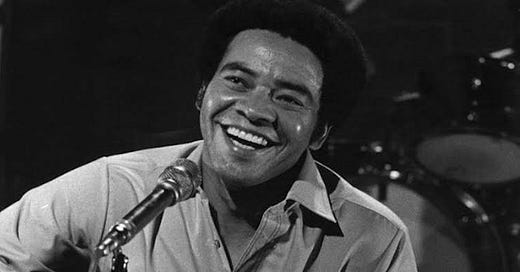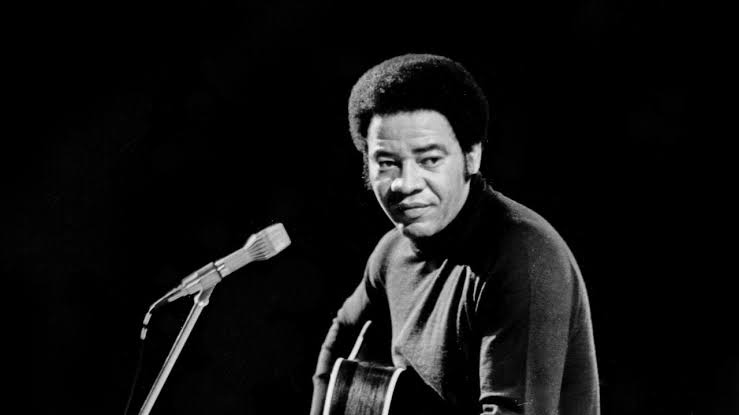"When I look at you, and the world's alright with me": Unveiling the Emotional Journey of Bill Withers' "Lovely Day"
"Exploring the Emotional Depths of 'Lovely Day': A Journey Beyond Romance into the Transformative Power of Human Connection and Resilience"
"When I look at you, and the world's alright with me," sings Bill Withers in his 1977 classic "Lovely Day." These words, simple yet profound, serve as a gateway into a universe of emotion, a landscape where the sun doesn't just rise—it dances. Released on December 16, 1977, as part of Withers' sixth studio album, "Menagerie," the song is perhaps best known for its iconic 18-second note, one of the longest ever recorded in American pop music. But beyond the technical brilliance lies a tapestry of human emotion, woven with threads of love, despair, and resilience. This article aims to pull back the curtain on "Lovely Day," exploring its deeper meanings through a series of thought-provoking questions.
What Emotional Journey Does "Lovely Day" Take Us On?
The opening lines of "Lovely Day" are a confession, a glimpse into the soul of a man who wakes up "on the wrong side of the bed," as many of us often do. The day ahead seems daunting, filled with tasks he either doesn't believe he can achieve or simply doesn't want to face. But then, a transformation occurs. A mere glance at a significant person in his life, and suddenly, "the world's alright."
Bill Withers once said that the song is not merely an ode to the beauty of nature or a day well-spent; it's a narrative about how a relationship can change one's entire outlook. "When he 'looks at' this individual, then 'the world is alright,'" Withers explained. The song captures this metamorphosis from a morning of dread to a "lovely day," attributing this shift not to a change in circumstances but to a change in perspective, brought about by the presence of a cherished individual.
The emotional journey portrayed in "Lovely Day" is a universal one. It's a tale of how our interactions, especially with those we hold dear, can lift us from the depths of despair to the heights of joy. It's about the transformative power of relationships, how they can turn a gloomy forecast into a day of sunshine. In essence, "Lovely Day" serves as a musical testament to the human capacity for change, for seeing the light even when surrounded by darkness.
What Does "Lovely Day" Reveal About Human Resilience?
In a world that often feels like a labyrinth of challenges, "Lovely Day" serves as a gentle reminder that the exit is often closer than we think. The song is a hymn to human resilience, a tribute to our innate ability to rise above the mundane and the difficult. It's not just a song; it's a mirror reflecting our own struggles and triumphs, our battles with tasks that seem insurmountable until someone shows us they're not.
The song's protagonist starts his day with a sense of dread, a burden of tasks that weigh heavy on his soul. Yet, the mere presence of a significant other lightens this load, making the impossible seem possible. Analysts have often classified "Lovely Day" as a feel-good anthem, a tune to lift spirits. But beneath its buoyant melody lies a deeper layer—a testament to human resilience, to our ability to face challenges head-on when empowered by love or companionship.
The song doesn't just say it's going to be a "lovely day"; it shows us how to make it so. It's a lesson in perspective, a guide on how to navigate life's complexities with a heart full of hope. If we are to make one solid presumption about the song, it would be that the protagonist is faced with a task he either doesn't believe he can achieve or simply doesn't want to do. But the presence of this significant other, this beacon of hope, makes him realize that "it ain't even that serious," as the saying goes. Whether he accomplishes the task or not, it remains "a lovely day."
In this way, "Lovely Day" transcends its status as a mere feel-good tune to become an anthem of resilience, a song that captures the essence of human strength and the transformative power of perspective. It's not just about finding joy; it's about creating it, even when the skies are gray and the road ahead is long.
What Makes "Lovely Day" More Than Just a Love Song?
At first listen, "Lovely Day" might seem like a quintessential love song, a musical ode to the transformative power of romantic affection. But to label it as such would be to overlook its broader emotional and thematic scope. Bill Withers himself has clarified that the song was not inspired by a romantic relationship but by an "optimist" friend who helped him see things in a different light. "It's not just about a lover," Withers said, "but about how someone can change your entire outlook on life."
This revelation adds another layer to the song's already rich tapestry. It expands its reach, making it relatable not just to those in love but to anyone who has ever been touched by the simple act of kindness, friendship, or even a stranger's smile. It's a song that celebrates the human connections that make life worth living, that turn ordinary days into extraordinary ones.
Music critics and analysts often talk about the song's universal appeal, but what truly makes it universal is its ability to transcend the love song genre. It's not just a song for lovers but a song for humanity. It captures the essence of what it means to be human—to seek connection, to find joy in the simple things, and to let these joys illuminate our world, making every day a "lovely" one.
In this way, "Lovely Day" becomes a celebration of the human experience, a musical journey that takes us beyond the realm of romantic love to explore the deeper connections that bind us all. It's a song that reminds us that love, in all its forms, has the power to transform, to uplift, and to make every day a little bit lovelier.





